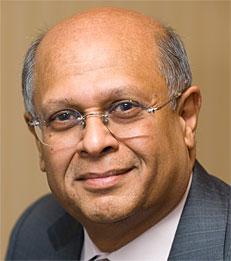Opinion
India Inc's Rising Cost of External Capital
—

By Paolo Pasquariello, Marti Subrahmanyam, and Davide Tomio
India needs external capital to grow. This has been true since the early years of Central planning following independence when India relied on external debt raised mostly by its Central and state governments from foreign governments and multilateral agencies (like the World Bank). Until the liberalisation of the economy in 1991, few Indian companies were able to do so. In the 1990s, these companies finally began to raise external equity and debt capital, mostly through Global Depositary Receipts (GDRs) and Eurobonds. After the first Indian companies were listed on stock exchanges in the United States in 1999, equity funding took the form of American Depositary Receipts and Foreign Portfolio Investment. In parallel, Indian companies raised debt through External Commercial Borrowing (ECB), mainly in Eurobond markets.
Since then, the ratio of external debt to GDP has grown steadily and touched around 20 per cent ($563.9 billion) in March 2020. Of this, a large fraction (38.8 per cent) is ECB debt, regulated by the Reserve Bank of India (RBI) and the Ministry of Finance (MoF). In particular, the RBI closely monitors pricing and quantity of ECB debt to ensure that external indebtedness stays within limits. At present, the cap on the interest rate ("all-in cost") for Indian companies is the benchmark rate, that is, the London Interbank Offered Rate (LIBOR), plus 450 basis points (4.5 per cent), equivalent to about 5 per cent in USD for floating rate debt. This compares favourably with their domestic rupee cost of borrowing, even after considering the potential depreciation of rupee against USD, or hedging costs. Most of the highest-rated Indian companies such as Reliance Industries, State Bank of India and ICICI Bank Ltd. have been able to borrow at much tighter spreads - at all-in USD interest rates as low as 2.3 per cent on average - as recently as February 2020.
Under normal circumstances, these spreads reflect and compensate lenders for the credit risk they bear while lending to the best Indian companies - currently rated by global rating agencies (S&P, Moody's, Fitch) at the lowest investment-grade level (BBB- from S&P) or a notch higher, on the international scale. However, the Covid-19 pandemic has dislocated global credit markets and, as we discuss next, these spreads have significantly widened since then.
Read the full Business Today article.
---
Marti Subrahmanyam is the Charles E. Merrill Professor of Finance, Economics and International Business
Since then, the ratio of external debt to GDP has grown steadily and touched around 20 per cent ($563.9 billion) in March 2020. Of this, a large fraction (38.8 per cent) is ECB debt, regulated by the Reserve Bank of India (RBI) and the Ministry of Finance (MoF). In particular, the RBI closely monitors pricing and quantity of ECB debt to ensure that external indebtedness stays within limits. At present, the cap on the interest rate ("all-in cost") for Indian companies is the benchmark rate, that is, the London Interbank Offered Rate (LIBOR), plus 450 basis points (4.5 per cent), equivalent to about 5 per cent in USD for floating rate debt. This compares favourably with their domestic rupee cost of borrowing, even after considering the potential depreciation of rupee against USD, or hedging costs. Most of the highest-rated Indian companies such as Reliance Industries, State Bank of India and ICICI Bank Ltd. have been able to borrow at much tighter spreads - at all-in USD interest rates as low as 2.3 per cent on average - as recently as February 2020.
Under normal circumstances, these spreads reflect and compensate lenders for the credit risk they bear while lending to the best Indian companies - currently rated by global rating agencies (S&P, Moody's, Fitch) at the lowest investment-grade level (BBB- from S&P) or a notch higher, on the international scale. However, the Covid-19 pandemic has dislocated global credit markets and, as we discuss next, these spreads have significantly widened since then.
Read the full Business Today article.
---
Marti Subrahmanyam is the Charles E. Merrill Professor of Finance, Economics and International Business
